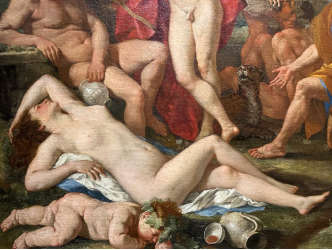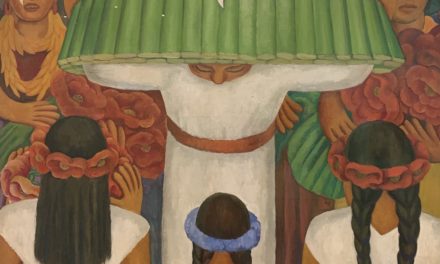The two very last month
There is not only the Vermeer exhibition to see in Amsterdam. The Van Gogh Museum is also presenting an exceptional exhibition featuring 48 paintings and 25 drawings exclusively dedicated to the Dutch artist’s creation in Auvers sur Oise, before his suicide on 27 July 1890.
78 works in two months
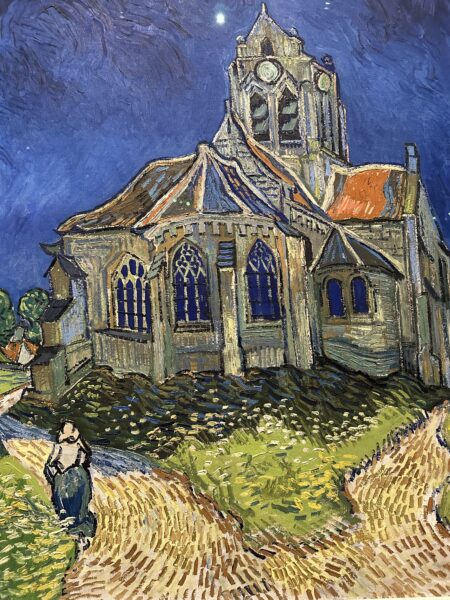
He arrived in the town, where Doctor Gachet lived on 20 May that same year, while around him the natural world in springtime was coming into bloom. His pace of production was staggering, considering that he made 78 works in two months. This is the first time since his death that these works have been brought together once more.
Delight
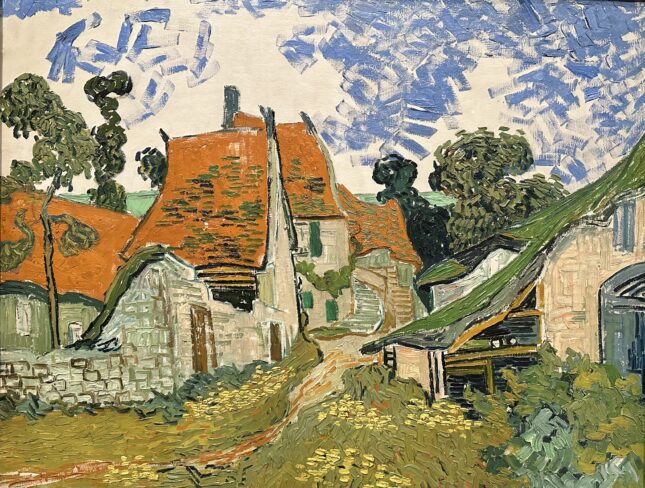
The show, which has been in preparation since 2018, unfolds across two huge floors that leave the necessary space to appreciate each work. The result is a total delight. In 1890 Vincent had reached a certain maturity.
Simple life
“His style is more compact, more rapid in execution and more raw too. But he was working with the scenography,” explains the researcher at the Van Gogh museum, Louis Van Tilborgh. Fundamentally, he was extolling the merits of the simple life in the countryside. He made several types of portraits of houses in which the orange roofs are juxtaposed. They appear like hats on top of these mineral figures within their verdant setting: nature.
Depicted in motion
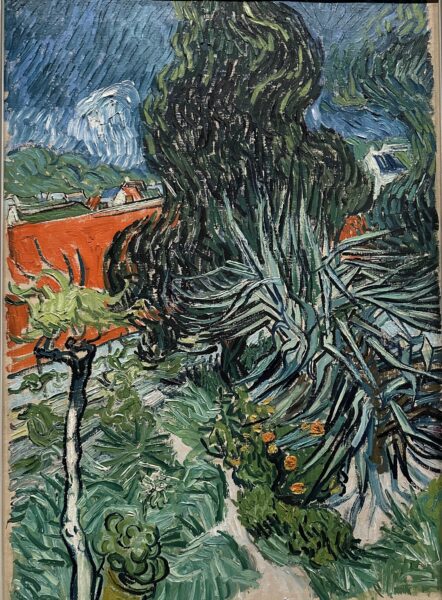
In terms of form, the grass, wheat, and trees are depicted in motion through countless small marks or larger brushstrokes. “La Ferme”, which is ordinarily in Helsinki, is overlooked by a white sky, cross-hatched in places with blue marks depicting the clouds. Here, then, he has inverted the principles of representation.
Explorations
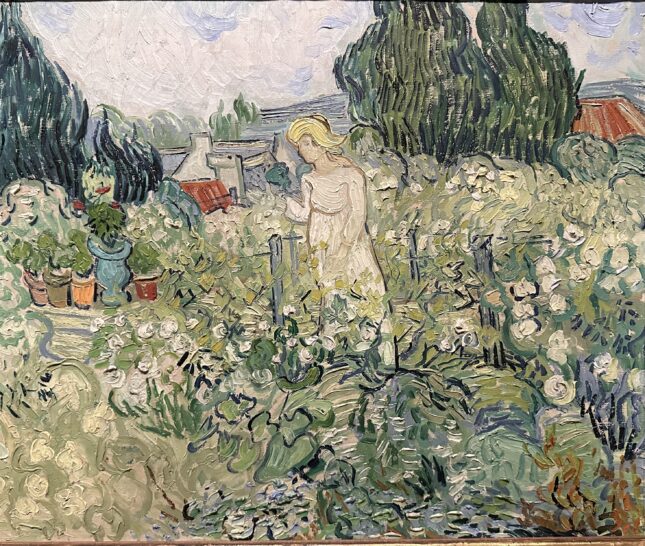
Because the artist was multiplying his explorations. We know his observation of Japanese prints directly influenced his work.
Like Hokusai and Hiroshige
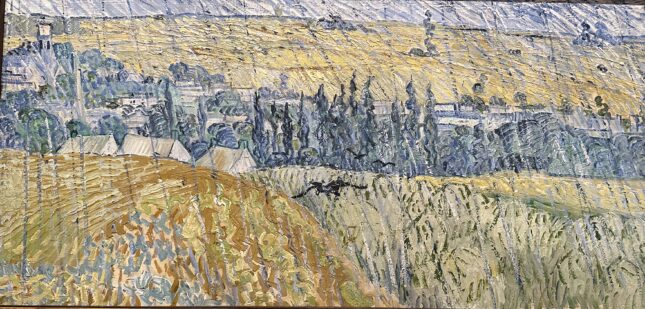
In “Pluie”, like Hokusai and Hiroshige, he covers the entirety of the canvas depicting a landscape with long vertical lines. Also similarly to the Japanese artists, in the same composition he dares to adopt different viewpoints.
Macabre interpretation
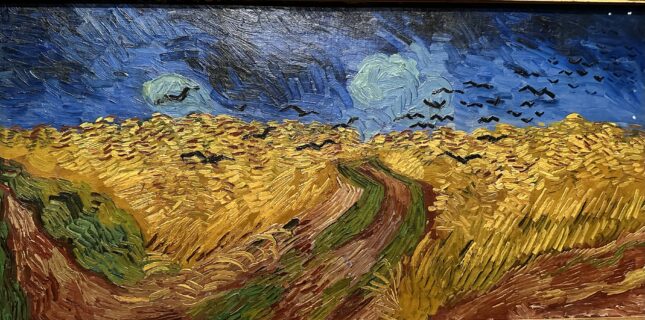
His masterful “Champ de blés aux corbeaux”(Wheat field with crows), split into two parts – the upper cobalt blue of the sky, the lower golden yellow of the field – features laterally whilst the three winding roads are seen from above. The birds obscure the horizon with their black wings. It’s difficult to escape the macabre interpretation of this canvas.
Nienke Bakker
But as curator Nienke Bekker affirms, “we have formally identified the painting he made the morning when he attempted to end his life.” This painting was “Racines d’arbre”( Tree roots). She sees in it: “the symbol of someone who is clinging on to life.”
Nothing sinister?
The composition, which is all blues and greens against a straw-coloured background, animated by sinuous forms emerging from the earth, has nothing sinister about it.

The exhibition will be travelling to the Musée d’Orsay in October 2023 with few variants on the paintings.
Van Gogh’s Cypresses
In the meantime the Metropolitan Museum in New York is showing “Van Gogh’s Cypresses,” an exhibition that begins May 22. The Met brings together 24 paintings, along with 15 drawings by Van Gogh.
Until 3 September. Van Gogh at Auvers sur Oise. His final months. https://www.vangoghmuseum.nl/
Support independent news on art.
Your contribution : Make a monthly commitment to support JB Reports or a one off contribution as and when you feel like it. Choose the option that suits you best.
Need to cancel a recurring donation? Please go here.
The donation is considered to be a subscription for a fee set by the donor and for a duration also set by the donor.


